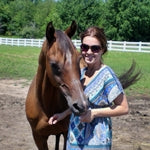Yellowstone Wolves Captured On Video Bringing "Toys" Back To Den For Pups
Andrea Powell
Wolves are starting to return to areas they once roamed freely thanks to wolf restoration projects. Yellowstone National Park (YNP) reintroduced wolves to the area in 1995 and today there are an estimated 10 packs with roughly 108 wolves in total.
Mollie's Pack named after Mollie Beattie, the female director of the US Fish and Wildlife Service during the reintroduction process, was captured on one of the park's trail cameras this spring carrying something special back to their dens.
"This spring, Yellowstone biologists documented adult wolves from the Mollie’s Pack traveling back to their den with some interesting items," wrote the park.
YNP shared the footage of the adult wolves carrying bones, horns, and sticks back to the den for the pups to chew on.
Check it out!
"Pups await food deliveries from successful hunts, but in the absence of food adults bring 'toys.' The instinct to bring items back to the den may be reinforced by evolution, and probably helps keep adults from being mobbed by sharp puppy teeth," the park added the park.
They went on to explain, "Yellowstone wolf packs typically have one litter of 4 to 5 pups each year. By late October, pups are two-thirds of their adult size and start traveling with the pack. Pups that survive the winter have learned to help the pack hunt large prey like elk and bison and will help raise the pack’s next litter of pups—delivering food, and sometimes toys."
Fans couldn't resist commenting how much the pups are just like kids. One person said, "Kids always demanding something new to play with, no matter the species." Others were thrilled to see the pack up close. Another wrote, "Wow! Rarely get to see the Mollies pack! Thank you for sharing!"
Mollie's Pack is a favorite among biologists and visitors. Yellowstone wolf biologist Kira Cassidy told Greater Yellowstone Coalition it is her favorite pack and described them "as the epitome of a 'girl-power' group."
People travel from around the world to see the wolves in their natural habitat. YNP shared, "The northern range of Yellowstone is one of the best places in the world to watch wolves." They are most active at dawn and dusk and should be observed from afar.
Biologists continue to monitor and study the wolf packs to learn as much as possible about the fascinating species. Learn more about the "Generation of the Wolf" in the video below.

Andrea Powell is an animal enthusiast who resides in West Michigan. When not writing, she is exploring the great outdoors with her dogs and horses.






















